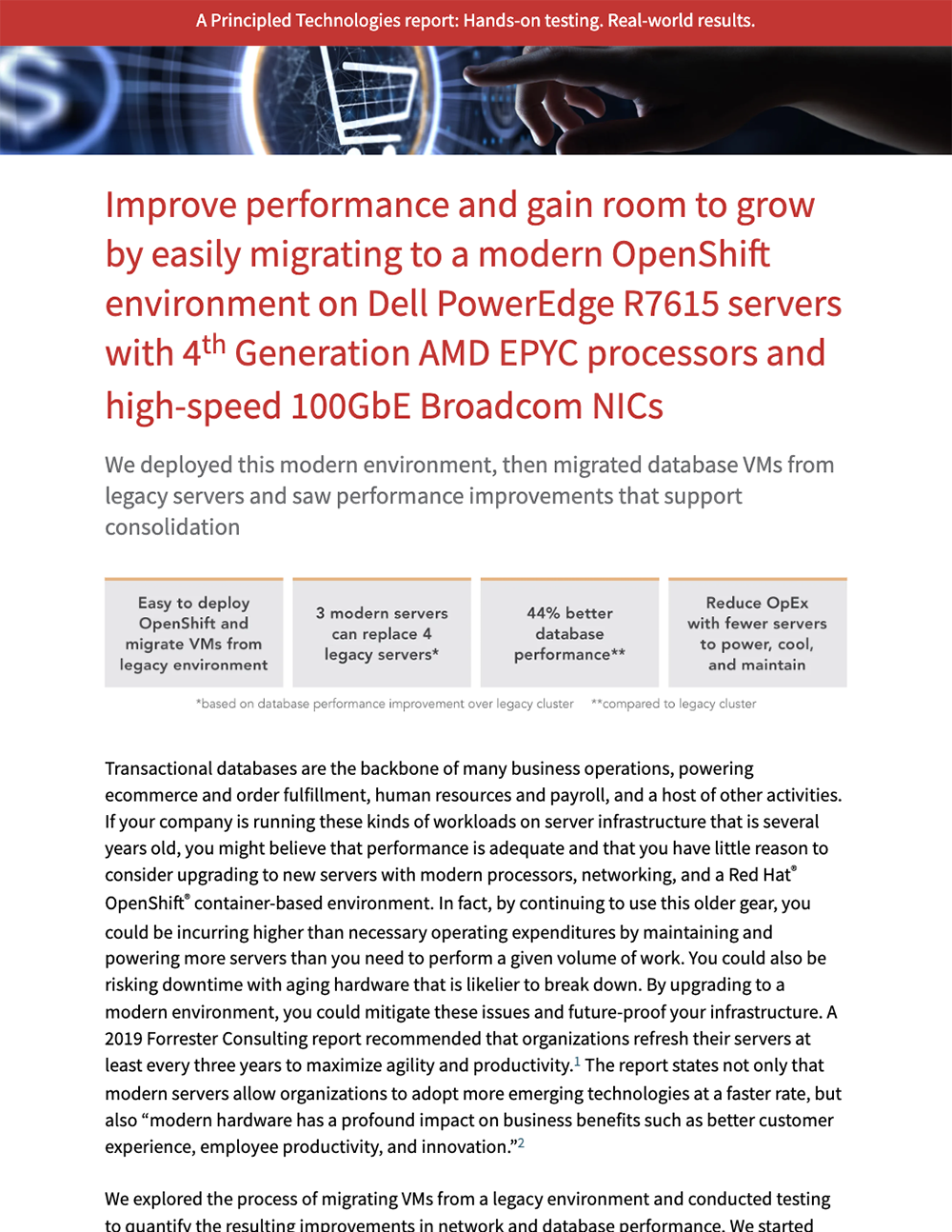
Businesses in many sectors of the modern economy, including finance, retail, and healthcare, rely on the speed and dependability of transactional databases to perform key business operations. It can be tempting for firms to think that their existing database infrastructure will continue to serve them well in the future, but legacy equipment has the potential to hinder company performance and growth in multiple ways, such as the need to deploy more systems to meet demand, higher maintenance and energy costs, and a greater risk of costly downtime. Companies can mitigate these issues, future-proof their infrastructure, and improve transactional database performance by migrating to a modern database environment with the latest generation of servers, processors, and networking.
We examined the process of transferring VMs from a legacy to a modern database environment and conducted testing to document the resulting performance benefits. We started with a legacy environment consisting of MySQL VMs running on a cluster of three Dell PowerEdge R7515 servers with 3rd Gen AMD EPYC processors and 25Gb Broadcom NICs. We then deployed a modern Red Hat OpenShift container-based environment comprising three Dell PowerEdge R7615 servers with 4th Gen AMD EPYC processors and high-speed 100Gb Broadcom NICs. We measured transactional database performance using the HammerDB benchmark.
We found that the initial OpenShift deployment process was easy: we completed the VM migration process with just a few setup steps and less than ten minutes of hands-on work. In our tests, the modern OpenShift environment with R7615 servers, 4th Gen AMD processors, and 100Gb Broadcom NICs outperformed the legacy environment, providing up to 44 percent better transactional database performance. Such post-upgrade performance advantages could enable a business to consolidate database hardware, reduce operational costs like power and cooling, and minimize the time IT staff spends on maintenance. The modern solution's high-speed 100Gb Broadcom NICs can also improve network performance and networking capacity, which could help businesses successfully adopt emerging technologies like AI, which may place significant demands on networks.
To dig into the details of our legacy and modern database environment performance comparison tests, check out the report below.
Principled Technologies is more than a name: Those two words power all we do. Our principles are our north star, determining the way we work with you, treat our staff, and run our business. And in every area, technologies drive our business, inspire us to innovate, and remind us that new approaches are always possible.






